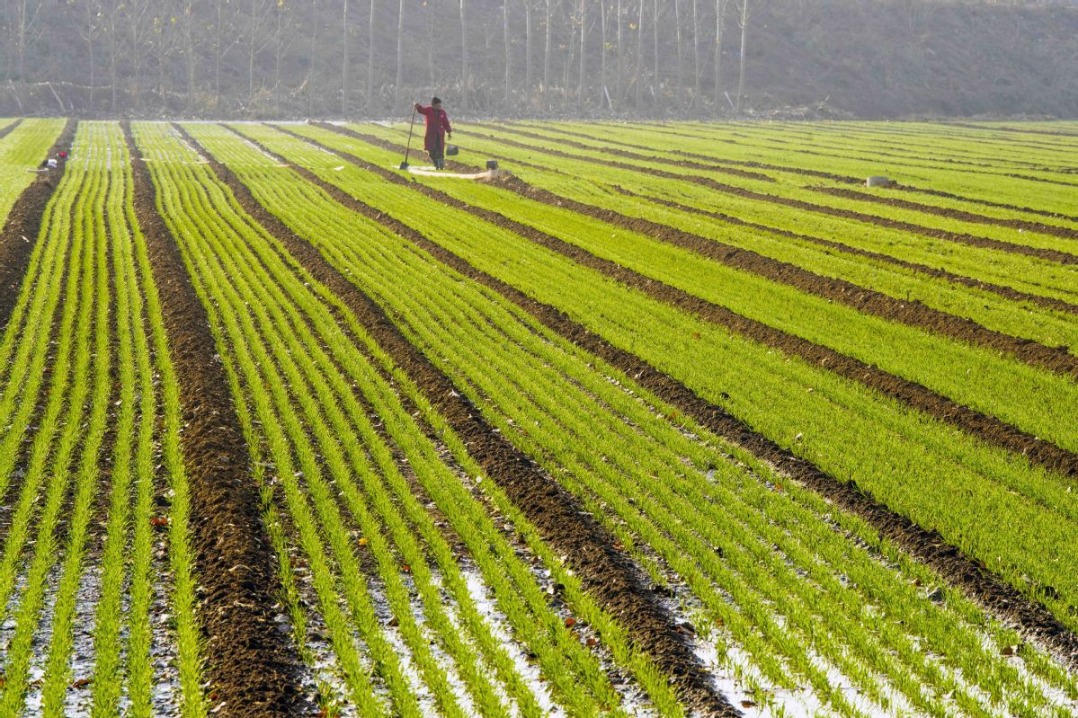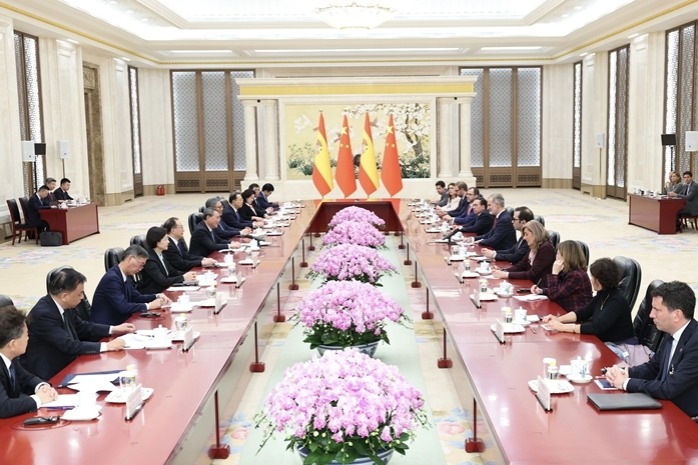Smart system boosts tomato harvesting

Chinese scientists have developed a digital twin greenhouse system to boost the efficiency of tomato harvesting, offering new insights into the intelligent transformation of large-scale precision agriculture.
Led by researchers from the Agricultural Information Institute of the Chinese Academy of Agricultural Sciences, the study titled "Digital twin-driven system for efficient tomato harvesting in greenhouses" was recently published in the journal Computers and Electronics in Agriculture.
Chai Xiujuan, chief scientist of the institute's machine vision and agricultural robot innovation team, said the research addresses key challenges in automated tomato harvesting in greenhouses, including limited camera views, fruit occlusion and complex fruiting patterns.
"Efficient and low-damage harvesting remains a major challenge in modern greenhouse tomato production, particularly in dense planting environments," Chai said. "Our study presents a digital twin-driven system for intelligent tomato harvesting."
Using a slidable depth camera mounted on the harvesting robot, the team reconstructed a high-fidelity 3D digital twin of the greenhouse that accurately captures the spatial distribution and growth states of tomatoes.
Based on this virtual environment, the researchers developed a learning-based framework to optimize harvesting strategies, including robot positioning, arm trajectory planning, fruit selection priority and adaptive operation modes, Chai added.
Experimental results in Beijing and the Inner Mongolia autonomous region showed that the method significantly improved harvesting performance, reducing average picking time by nearly 35 percent to 7.4 seconds per fruit, while collision occurrences dropped by 45 percent.
Lang Yining, a team member, said the study bridges the gap between local-view tomato harvesting and overall greenhouse optimization by integrating perception, simulation and decision-making within a unified digital twin system.
"Traditionally, a depth camera is installed on the robotic arm to capture the picking view and make harvesting decisions," Lang said. "However, such decisions are usually based only on the local field of view from the current camera position, which may contain just a few tomatoes."
"In our approach, a depth camera mounted on a sliding rail scans dynamically to reconstruct the overall structure of the greenhouse plants," he said. "This creates a digital twin of the entire tomato-growing environment and gives the picking decision algorithm a much broader scope for optimization."
The system provides a new model for large-scale deployment of intelligent agricultural systems driven by digital twin technologies, Lang added.
"While tailored for tomato harvesting, the system also shows strong potential for application to other greenhouse crops in precision agriculture," he said.
The team plans to further explore the use of digital twin technology to simulate the growth and harvesting environments of more crop varieties, enabling low-cost and high-efficiency training and evaluation of harvesting decision algorithms.
zhaoyimeng@chinadaily.com.cn
- Smart system boosts tomato harvesting
- Officials call for legal 'red lines' to guide AI growth at Wuzhen summit
- Bounty issued for 2 wanted 'separatists'
- China's Shenzhou XX crew to return to Earth
- New guideline prioritizes innovation over metrics
- Nation's tech achievements drive SAR athletes' success




































